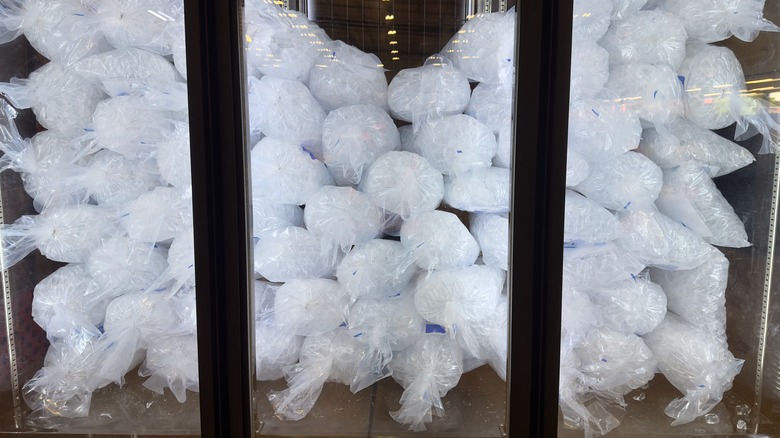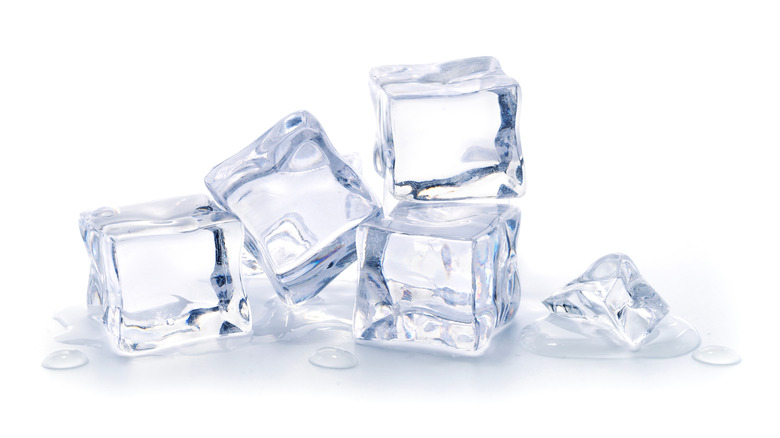Avoid This Common Mistake When Transferring Ice From The Bag To The Freezer
A bag of ice at the right time can feel like a lifesaver, not to mention a key feature of any good party. But all too often, you pull the bag out of the freezer, and instead of small individual cubes, you've got a huge amorphous lump. This happens when the ice inside melts slightly and then refreezes. Given that all of the ice cubes are lying on top of each other, they end up welding together. To avoid this, ensure that you empty any excess water before transferring the ice to the freezer.
The internal temperature of ice is not consistent throughout, with the inner core always the coldest spot and warming the further out it goes. In fact, surrounding an ice block is called a quasi-liquid layer, which is basically a barrier of not-quite-liquid but not-quite-ice, and it's actually this layer that makes ice so slippery. Make or open a small hole in your ice bag and carefully tip out the water. As soon as you finish, close the bag and transfer it to the freezer, as you don't want to allow the ice to melt further. This may not solve the issue entirely, but you should see a significant improvement. Other tricks include the paper bag method for storing ice, which involves placing a paper bag over the ice blocks to absorb excess moisture, preventing them from sticking together.
What to do if the ice in your bag is stuck together
In the event that your ice is stuck together and you need a quick fix, there are a few options. The first is to take the bag and hold it up (about as high as you can naturally reach, don't go breaking out a ladder for this) and drop it on the ground. You may need to repeat this, but this is a pretty easy and effective way to break the ice. The bag needs to be confidently sealed for this method, or you'll end up with more stress than when you started. You can also take a hammer or mallet, if you have one on hand, and knock the ice apart.
Both of these methods work for ice blocks or nuggets. Home ice makers are gaining popularity (though be warned, not all are equally good), giving you more variety for your drinks. That said, crushed ice has a greater tendency to stick together, given its relatively large surface area and the fact that it is more compact. Whatever the source of your ice, when storing it, ensure it's sealed and that your freezer is clean. Interestingly enough, ice can still develop freezer burn and a stale taste if kept in subpar conditions, making the large lump the least of your worries.


